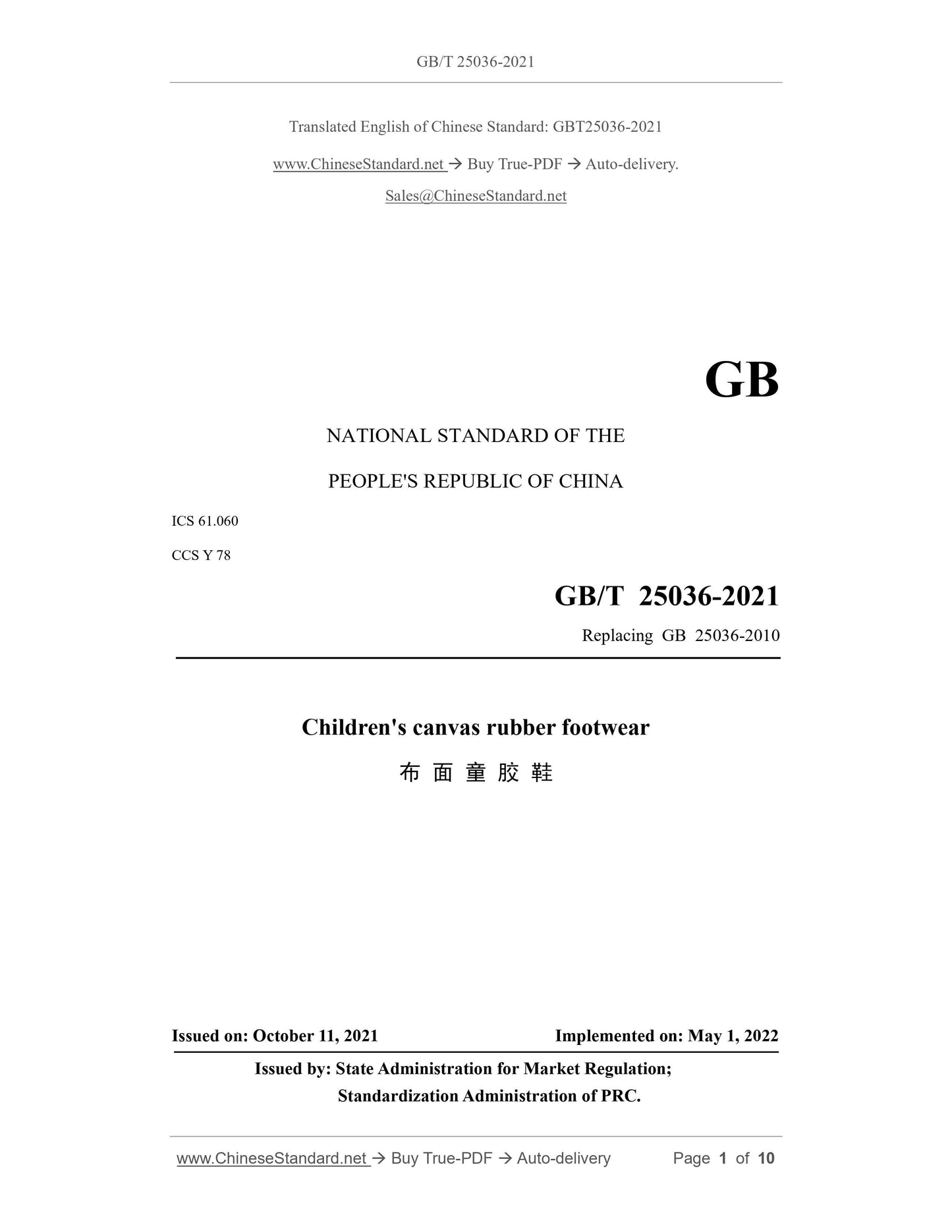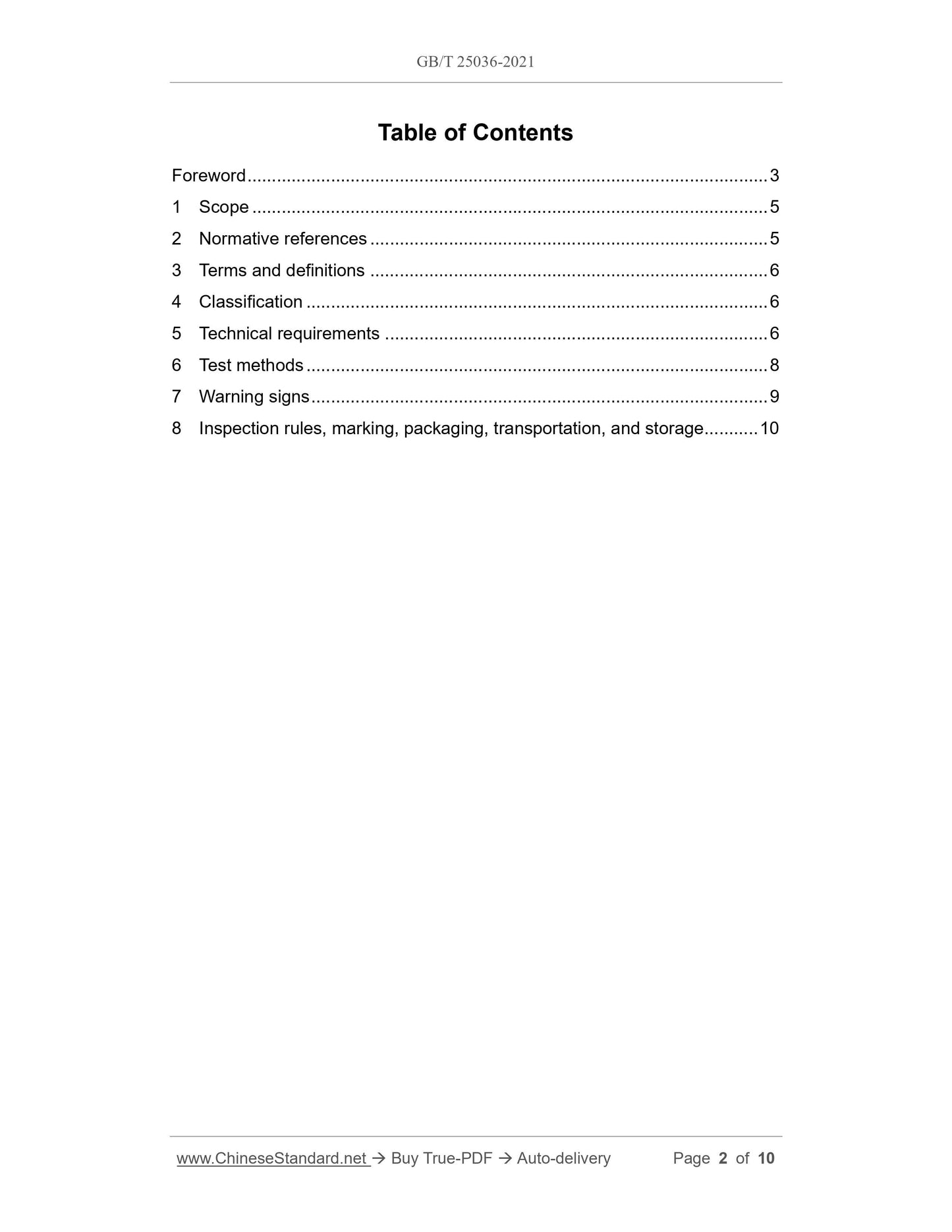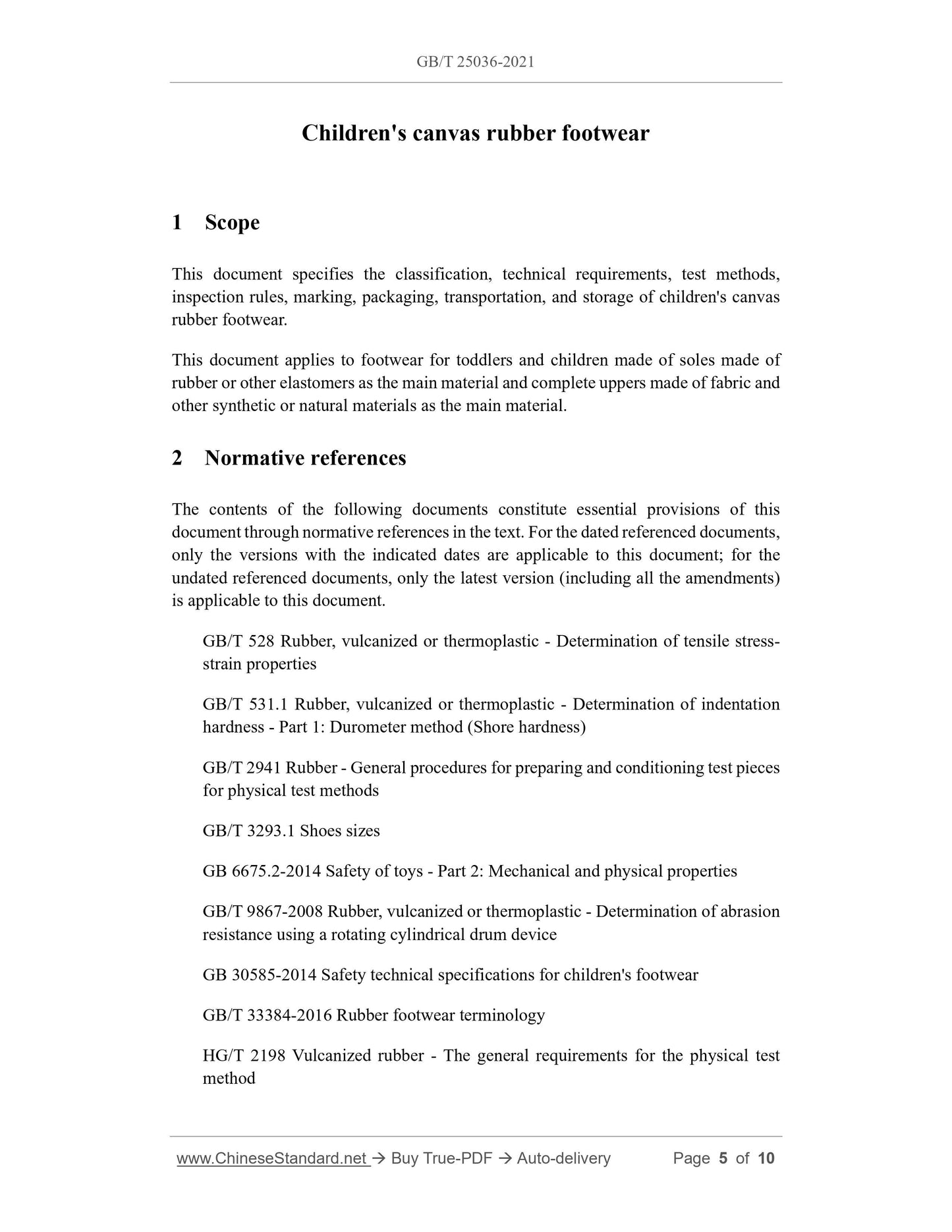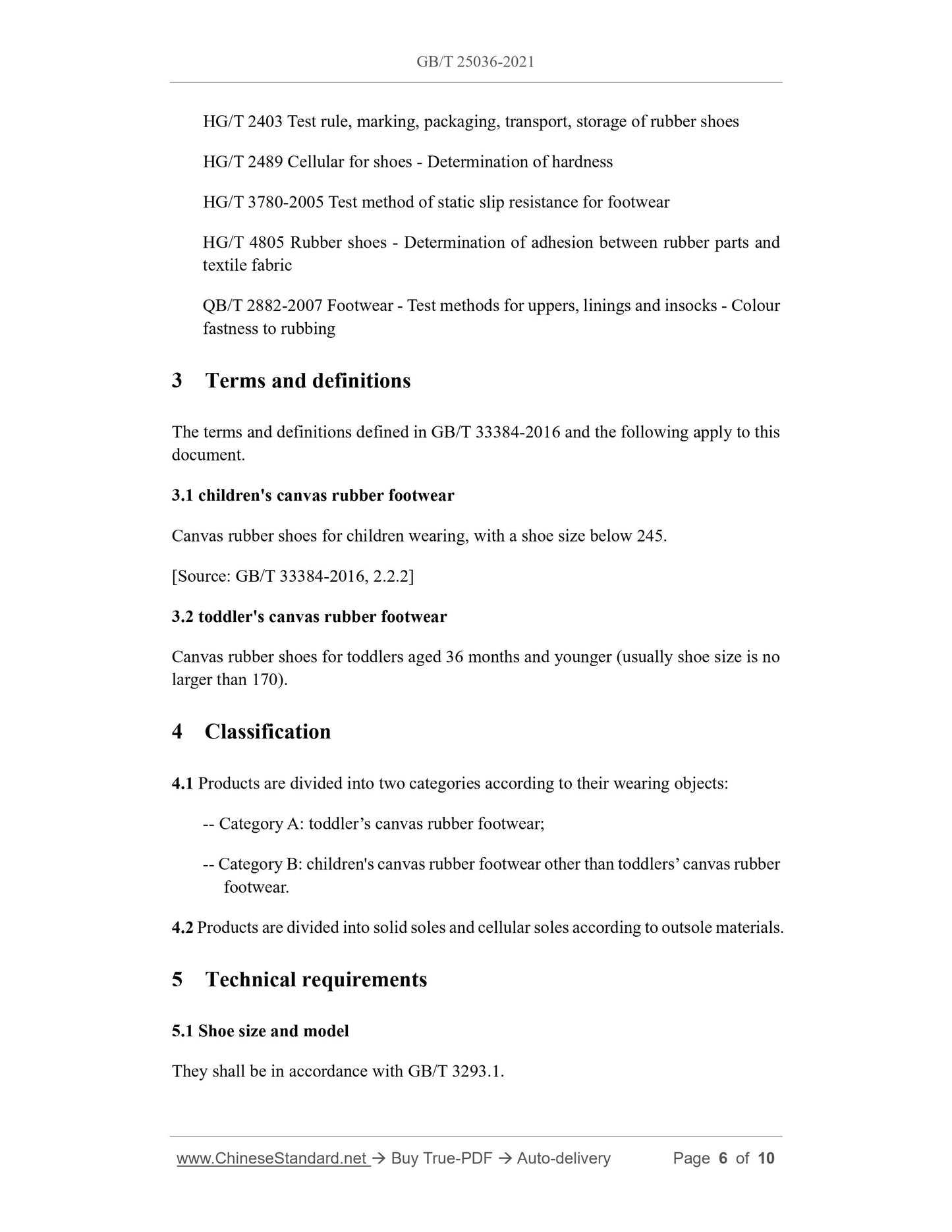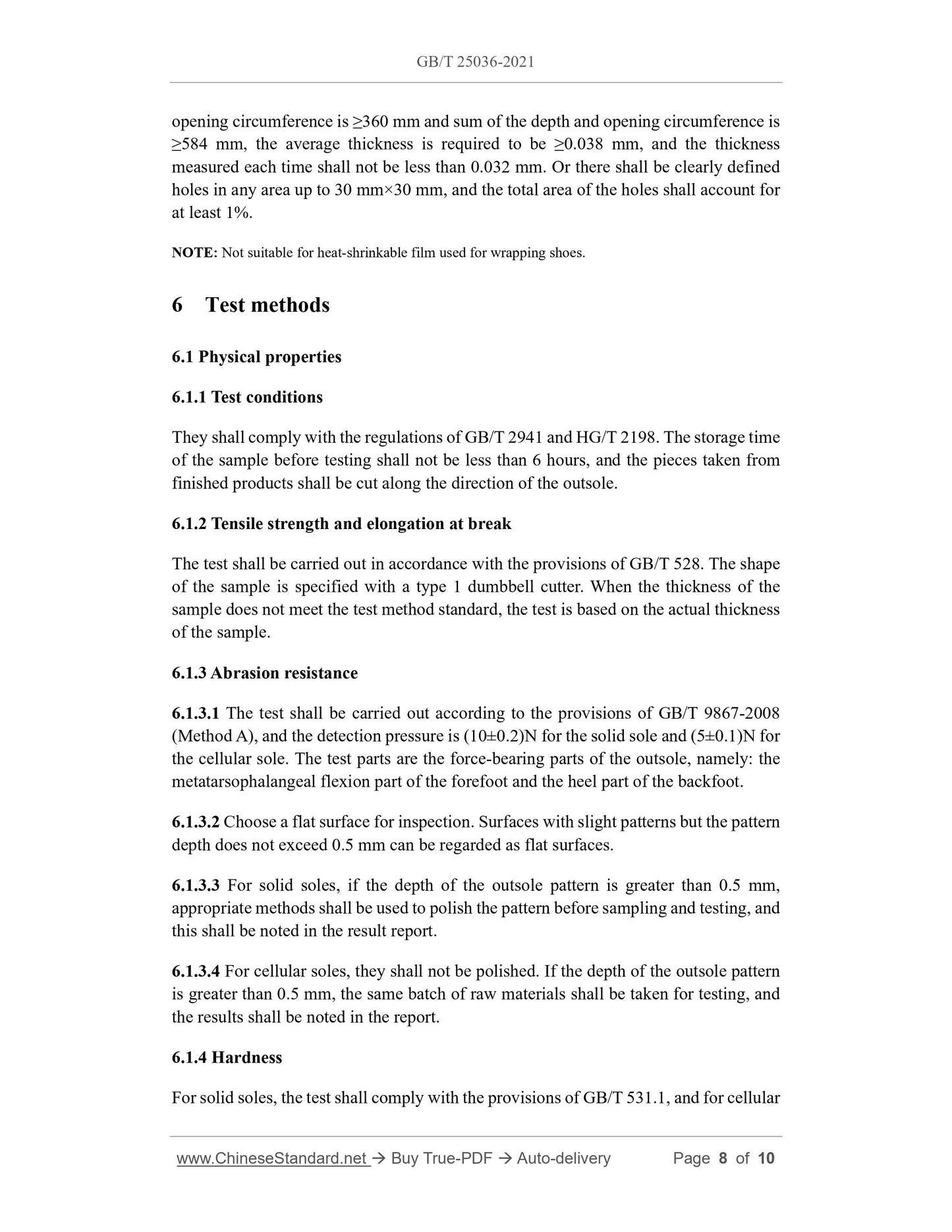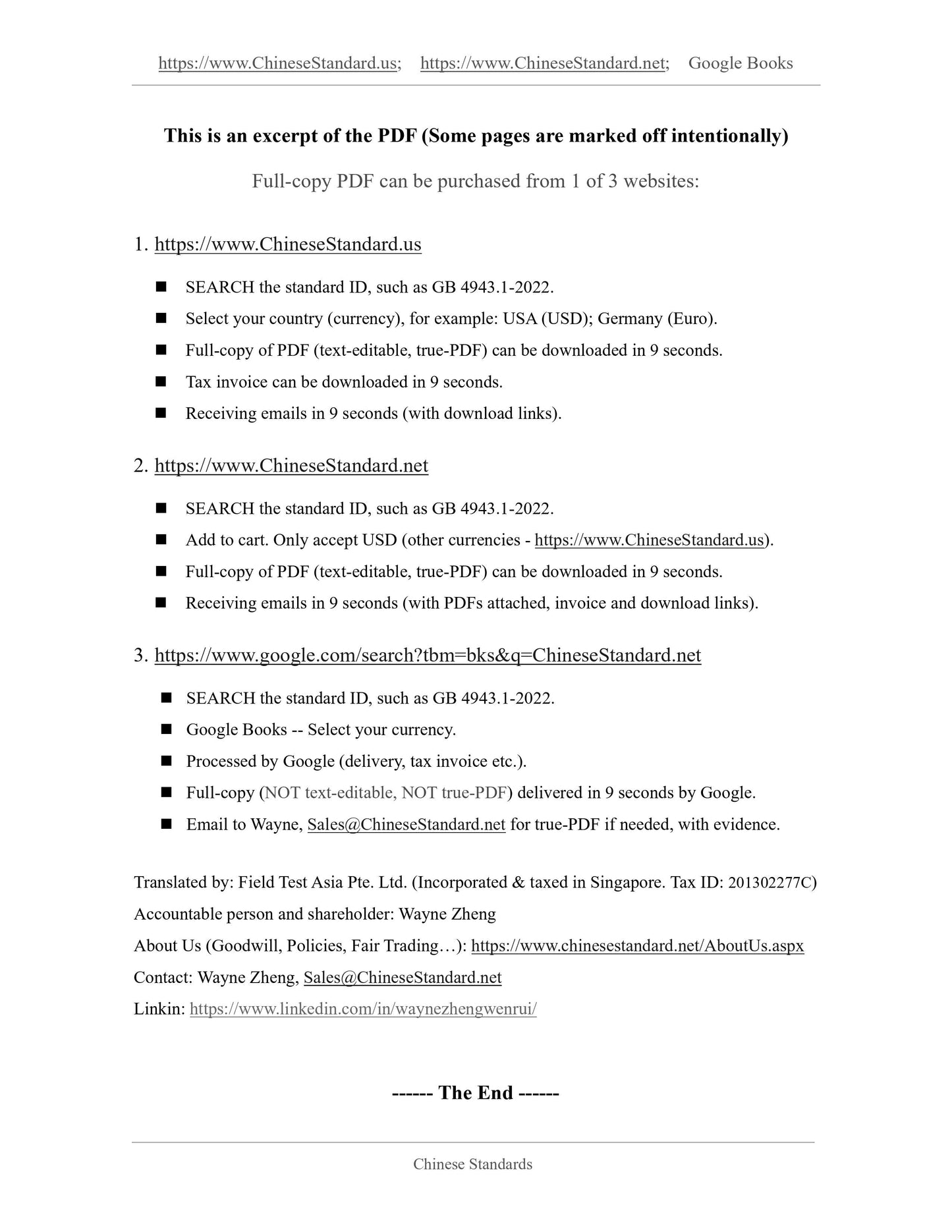1
/
of
6
www.ChineseStandard.us -- Field Test Asia Pte. Ltd.
GB/T 25036-2021 English PDF (GB/T25036-2021)
GB/T 25036-2021 English PDF (GB/T25036-2021)
Regular price
$110.00
Regular price
Sale price
$110.00
Unit price
/
per
Shipping calculated at checkout.
Couldn't load pickup availability
GB/T 25036-2021: Children canvas rubber footwear
Delivery: 9 seconds. Download (and Email) true-PDF + Invoice.Get Quotation: Click GB/T 25036-2021 (Self-service in 1-minute)
Newer / historical versions: GB/T 25036-2021
Preview True-PDF
Scope
This document specifies the classification, technical requirements, test methods,inspection rules, marking, packaging, transportation, and storage of children's canvas
rubber footwear.
This document applies to footwear for toddlers and children made of soles made of
rubber or other elastomers as the main material and complete uppers made of fabric and
other synthetic or natural materials as the main material.
Basic Data
| Standard ID | GB/T 25036-2021 (GB/T25036-2021) |
| Description (Translated English) | Children canvas rubber footwear |
| Sector / Industry | National Standard (Recommended) |
| Classification of Chinese Standard | Y78 |
| Word Count Estimation | 6,659 |
| Issuing agency(ies) | State Administration for Market Regulation, China National Standardization Administration |
Share
